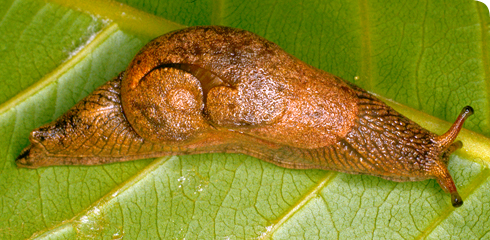Ratnadvipia karui
Ratnadvipia karui belongs to a genus of land snails that is endemic to Sri Lanka. Ratnadvipia karui was discovered and described by Museum scientists Dr Dinazarde and Fred Naggs carrying out field work in Sri Lanka.
Species detail
This recently discovered species (Raheem and Naggs, 2006) has a partly membranaceous, ear-shaped shell, which is completely or almost entirely concealed by the mantle. The shell measures 19-22 mm in width and 6.5-8.5 mm in height, and in life, adults snails are between 60-90 mm in length. The colour of the body in living snails varies from grey in juveniles to dark grey, orange or brownish yellow in adults.
-

Taxonomy
The genus Ratnadvipia consists of two species, Ratnadvipia irradians and R. karui, which can be easily distinguished from each other.
-

Distribution and habitat
The snail Ratnadvipia karuiis endemic to Sri Lanka,in an area restricted to southwest, where it only occurs in lowland rainforest. Discover more about the habitat of this Sri Lankan snail.
-

Biology
Learn more about what is known of the biology of Ratnadvipia karui.
-

Behaviour
Ratnadvipia karui appears to be at least partly arboreal. Discover more about what is known of the behaviour of Ratnadvipia karui.
-

Conservation
The snail Ratnadvipia karuiis threatened by habitat loss and fragmentation. Find out more.
-

References
Get reference material for Ratnadvipia karui.
Distribution map
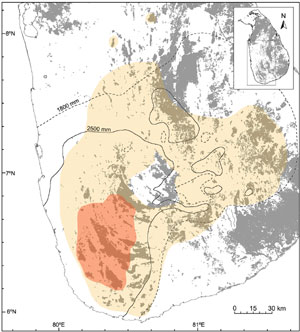
Distribution of Ratnadvipia karui (dark orange shading) and R. irradians (pale orange shading) in Sri Lanka in relation to natural forest cover (solid grey shading). The wet zone is delimited by the 2500 mm isohyet and the 1800 mm isohyet separates the intermediate and dry zones. Source for forest cover and rainfall data: Legg and Jewell (1992, 1995).
Images

Adult of Ratnadvipia irradians in life.
© D. Raheem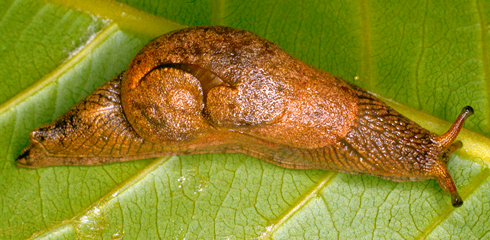
Ratnadvipia irradians

Adult of Ratnadvipia karui in life
© D Samarasinghe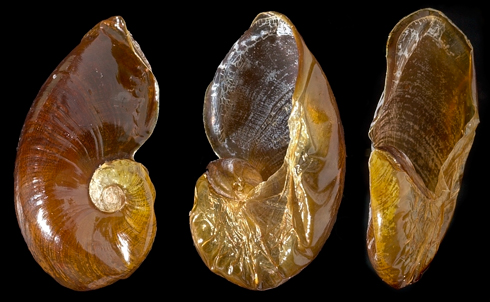
Shells of Rarnadvipia karui.
© H Taylor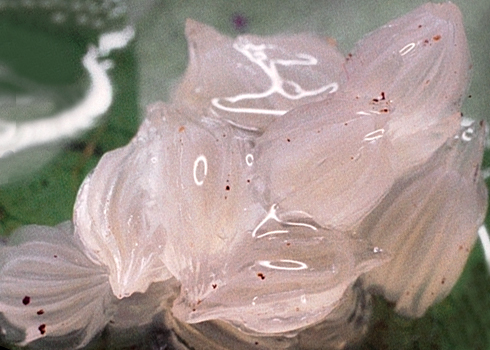
Rarnadvipia karui eggs
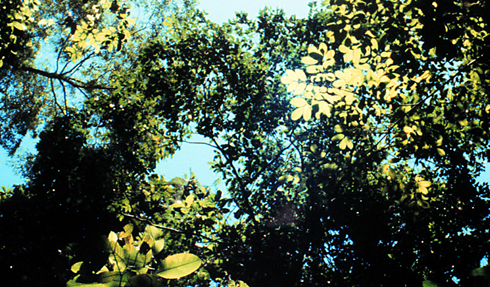
Lowland rainforest canopy, the natural habitat of Ratnadvipia.
© D Raheem
Rainforest and encroaching tea small holdings (paler green area in right foreground) in southwesten Sri Lanka.
© D Raheem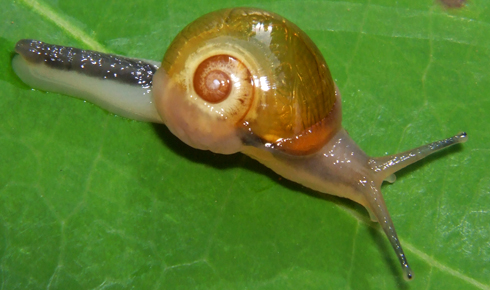
Juvenile of a Satiella sp. in life
© D. RaheemAuthor
Dr. Dinarzarde Raheem
Mollusca Research Group, Department of Zoology.
